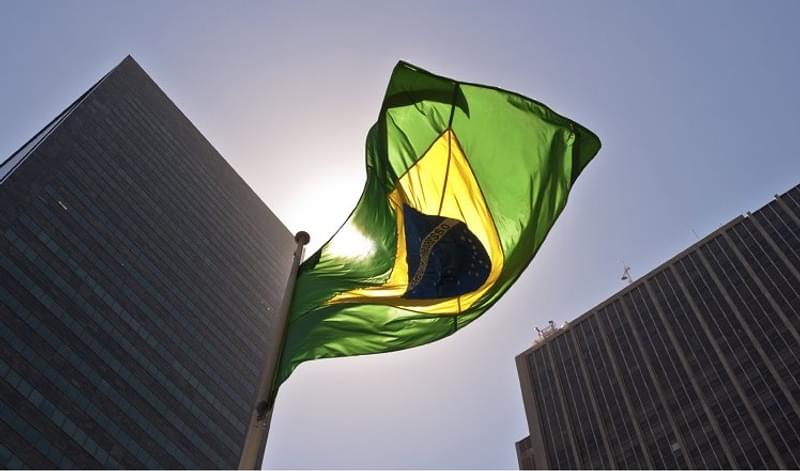Brazil has announced plans to issue a World Bank-led local government bond exchange-traded fund (ETF) – the first of its kind in emerging markets.
"This will be the first ETF (of this kind), and at some point it should start attracting foreign investors," the country's sub-secretary of public debt Jose Franco Medeiros de Morais told Reuters.
With benchmark interest rates at 14.25%, rates on corporate lending had been reaching an annual 20% in the first quarter of 2016 – some of highest in the world. That means encouraging higher levels of borrowing has been a major challenge for the banking sector despite being a huge source of potential funding.
According to the latest report by Fitch, as the recession continued through 2015 and early 2016, banks were forced to cut down on lending – first by 3.2%, then by a further 6.8%. Return on equity has barely met the costs for private sector banks, while public sector banks are actually falling short.
As the cash-strapped banks are now struggling to make ends meet, with some even postponing benefit pay-outs to pensioners, an urgent need for investment to boost growth has forced the government and the private sector to look for creative new solutions.
ETFs are seen as a likely contender and Brazil’s equity markets have been performing well throughout the final stages of the recession and in spite of Rousseff’s impeachment – a political shift that normally would cause havoc on the stock exchange.
It appears that the market is convinced that Brazil is ripe for reform and, for now, investors are giving the new administration the benefit of the doubt.
Brazil’s blue-chip index, Ibovespa Brasil Sao Paolo Stock Exchange Index, has risen about 28% over the last year, and a full 37% since January. The country’s largest ETF – the iShares MSCI Brazil Capped exchange-traded fund (EWZ) - is up 64% this year.
Steady 3-4% growth over the last month has been displayed by other major funds, including iShares MSCI China ETF (MCHI), the iShares MSCI India Small Cap ETF (SMIN) and the iShares MSCI BRIC ETF (BKF), as well as the Brazil ETF.
Part of this boom can be attributed to an improving outlook on the economy from the rating agencies. In particular, Moody’s, while acknowledging a contraction of 3.5% for the country’s economy end of 2016, has predicted modest growth in 2017 of 0.5%, led primarily by private investment, rising business confidence and the need to raise production to replenish depleted inventories.
Other factors, such as the weakening of the dollar and a partial recovery in oil prices, have also helped to improve the investment climate. With international bond markets struggling to provide high enough yields to attract capital, investors a streaming to Latin American ETFs with a view of gaining exposure on the high-performing equity indexes.
Compared to their more conventional equivalent – mutual bonds – ETFs offer better transparency as they are obliged to publicly disclose all their portfolios on a daily basis, thus giving traders more control over their positions. The other advantage is that ETFs have superior tax efficiency: with very little turnover, they amass far less capital and, therefore, offer a much better tax rate for the investor.
These bonds can then be repackaged into different asset-classes and traded separately on different exchanges, delivering additional flexibility and diversification opportunities to investors.
However, as a relatively new and untested special purpose vehicle, the ETF holds some inherent risks if abused. In the past concerns have been expressed about the liquidity of the actual assets that are packaged in such a fund, particularly in fixed-income markets.
In such a case an ETF might hold too many securities that are not easily tradeable. As a result, the funds might not always be able to adjust their holdings without affecting the funds’ net asset value per share.
While some solutions have been proposed, such as the ‘15% solution’ whereby no more than 15% of a fund’s assets should be held in securities that would take more than seven days to convert to cash, investors are still encouraged to treat ETFs with caution.
Adam Collins, a Latin America economist at Capital Economics echoed some of this scepticism. “With these investment vehicles they are trying to broaden the appeal of their assets for local and foreign investors, because there is a lot of Brazilian debt to sell. That will be the case for a number of years.”
“It is part of the broader financial deepening, another option for investors. This strategy might help, but we don’t expect it to be transformative.”
This warning has not impeded a global swing towards ETFs, however, with investors piling in more than US$100bn this year into such investment vehicles, a rise of 24%.
Jose Medeiros is however confident Brazil can ride atop this wave, with government bond ETF helping to draw in fixed-income investors. "Only a small percentage of the population invest in stocks, but they love fixed-income," he said. "And I expect fixed-income ETFs to become very popular in Brazil."









